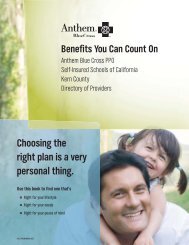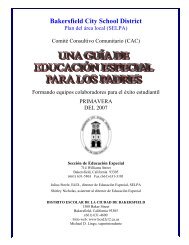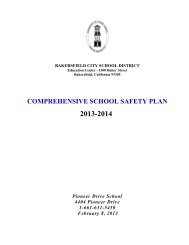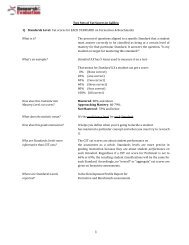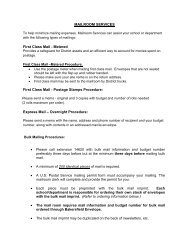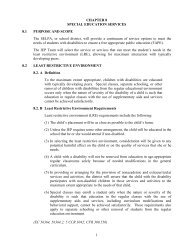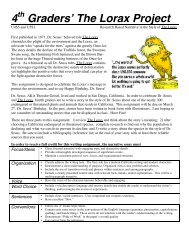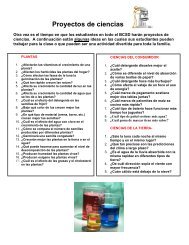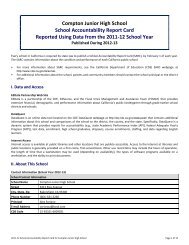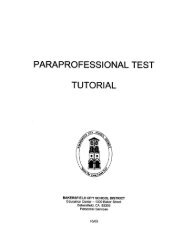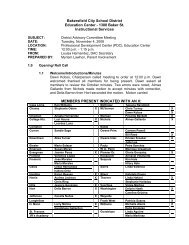Thorner - BCSD Static Server - Bakersfield City School District
Thorner - BCSD Static Server - Bakersfield City School District
Thorner - BCSD Static Server - Bakersfield City School District
You also want an ePaper? Increase the reach of your titles
YUMPU automatically turns print PDFs into web optimized ePapers that Google loves.
Safe <strong>School</strong> Plan Continued• The role of folk wisdom, life experience, mother wit, and common sense compared toformal education and scientific knowledge.• Ways that wealth and status are measured, whether it be in material goods like money andproperty, or in personal relationships like children, extended family support systems, andfriendships.• Views on youth or age. For example, a culture may revere its youth as the promise of thefuture or its elders as the repositories of wisdom.• Whether people are bound by tradition or open to experimentation.• Role of religion and/or spirituality in everyday life.• Body language, personal interaction, and boundaries regarding personal space.• Traditional foods and food customs.• Style of dress.• Musical preferences, such as rap, heavy metal, jazz, and salsa.• Holidays and festivals celebrated.• Favorite sports and sports figures.• Media choices, including newspapers, television, radio, and magazines.• Leisure time activities.• Dating rituals.Keep in mind that these are broad cultural differences and that there are also many differenceswithin groups and between individuals. Individual members of any particular culture varyconsiderably from general norms within that culture. Also, a group's culture is continuallyevolving, based on interaction with the mainstream society and other groups.Although race and ethnicity are the most obvious components of culture, there are many factorsthat shape a person's values, ideas, attitudes, and experiences. These include age, gender, sexualorientation, level of education, occupation, income, geographic location, preferred language,health status, urban vs. rural location, native versus foreign-born status, and customs, beliefs, andpractices. As a culturally competent teacher, it is important to take all of these factors into account.As you interact with students from diverse cultural and ethnic backgrounds, there are some generalthoughts to keep in mind:• Acknowledge culture as a predominant force in shaping behaviors, values, and institutions.• Acknowledge and accept that cultural differences exist and have an impact on how youreach students.• Recognize that diversity within cultures is as important as diversity between cultures.• Respect the unique, culturally defined needs of various students.• Understand that people from different racial and ethnic groups and other culturalsubgroups are generally best served by persons who are part of or in tune with theirculture.• Recognize that incorporating the strengths of many cultures enhances the capacity of thewhole group.The following tips may be especially helpful as you guide your students through the recoveryprocess following a disaster:• Learn a child's "usual" behavior and cultural/ethnic responses to be able to identify"unusual" or problem behavior.52



